The Ostrich Fern Bed
Where against all odds, one of my gardens looks absolutely stunning in its second year. Hard to believe.
It is a long and frustrating experience for a Type A gardener to plant a new bed, knowing that it often takes two to three years for plants to become fully established and look as wonderful as they do in pictures posted on the internet, or just as important, in your mind’s eye. In a way, it’s cruel to have to wait, especially for people not wired for waiting. But everyone agrees that there is no way to shortcut the process. Why this particular bed has flourished is a mystery to me, but I’m not complaining. Every time I stop here on morning patrol, I think to myself, maybe I can actually do this!
We should start with ostrich ferns, the namesake of this bed. This bed design is anchored by having ostrich ferns as the background for the smaller plants toward the front of the bed. I knew the ostrich ferns could be 3 to 6 feet tall and 5 to 8 feet wide. But to see them grow to nearly that size in just two seasons is awesome. I can’t wait to see what happens with them next spring. As you can see from the drawing, my ferns already take up close to one third of the bed.
There is some room to the right of the ostrich ferns where I could plant something else, or I might just let it fill in with the ferns. I’m told if I’m not wary they could take over the entire bed, which is easy for me to believe. I’ve already had to cut them back. My ostrich ferns are a bright green color that makes a nice contrast to the darker greens and purples of the coral bells and other shade plants in the garden. I think I will be dividing these plants next season and replanting them in the woodland garden behind my driveway. They should do well under the arborvitae trees. Last week I cut them down to the ground since they looked a lot like a garden salad that had been left outside of the refrigerator for way too long: brown and messy. I’m glad to say that the bed looks somewhat orderly again since they’ve been cut back, a state of affairs I appreciate the more time I spend out here. Orderly is good. Messy, not so much.
The Jack Frost brunnera have been an adventure. The original installation included three brunnera in this bed. I don’t know why, but the plants to the left and right of the middle plant died in 2022. To my surprise, this past spring the remaining plant just exploded with growth, its small, beautiful blue flowers making it the star of the entire garden for a month or so. I couldn’t stop looking at it.
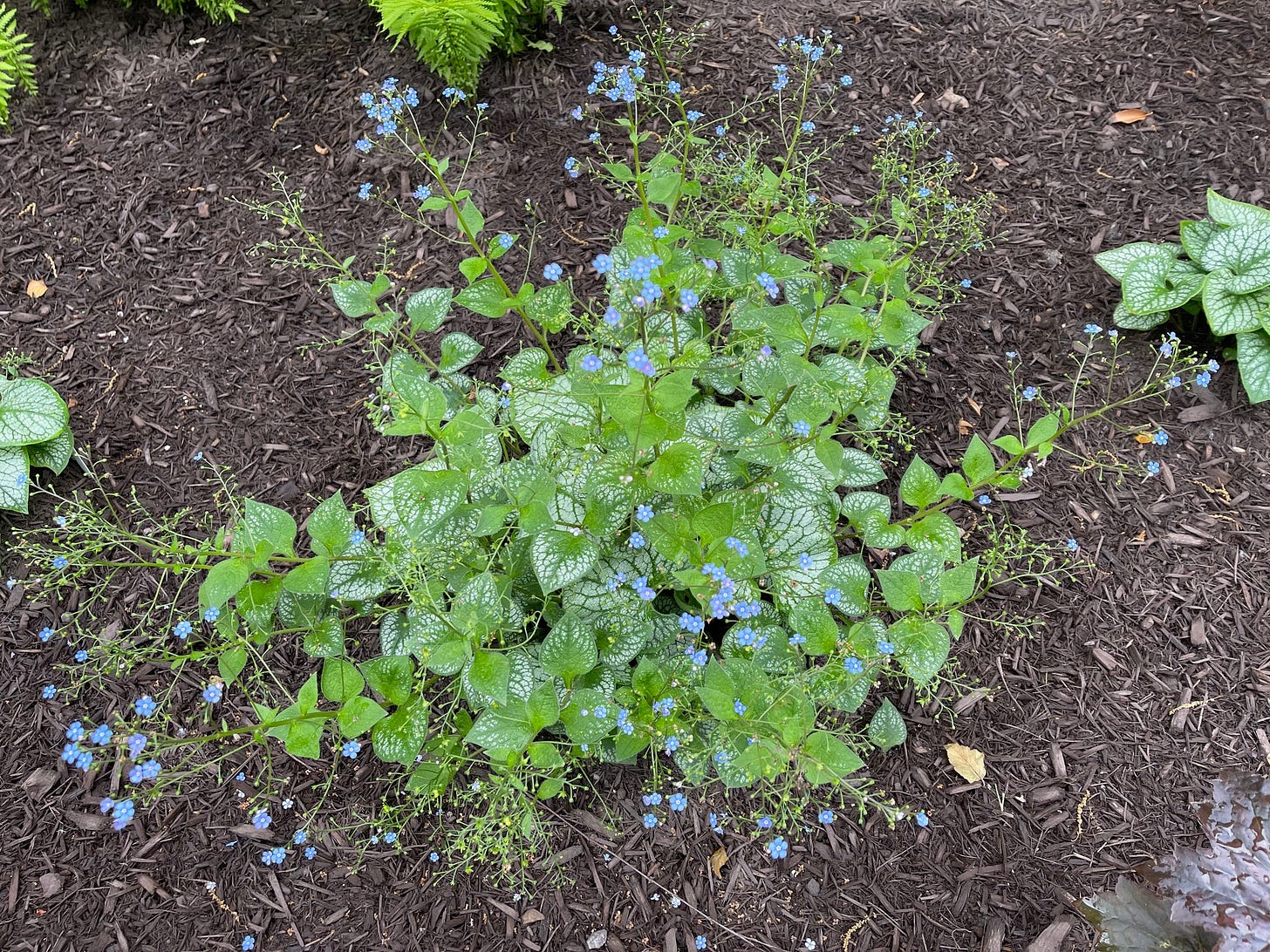
In April I purchased two more plants to flank the middle plant and planted them in roughly the same location in the bed as the original two brunnera. They’ve flourished this year, to the point that I can’t tell the difference between the original plant and the neighboring replacements. My guess is that I’ll nitpick the location of the healthy plants here all winter trying to improve a bed that is already doing great, especially compared to some of my other beds where the conversation is about keeping plants alive, rather than moving them a few inches to please the eye. I love the brunnera for its interesting-colored leaves throughout the year and the pretty little blue flowers it offers in the spring, just when you need to see some early-season color. It also looks terrific where it sits in the bed, sandwiched between the bright green of the ostrich ferns and the dark purple of the coral bells.
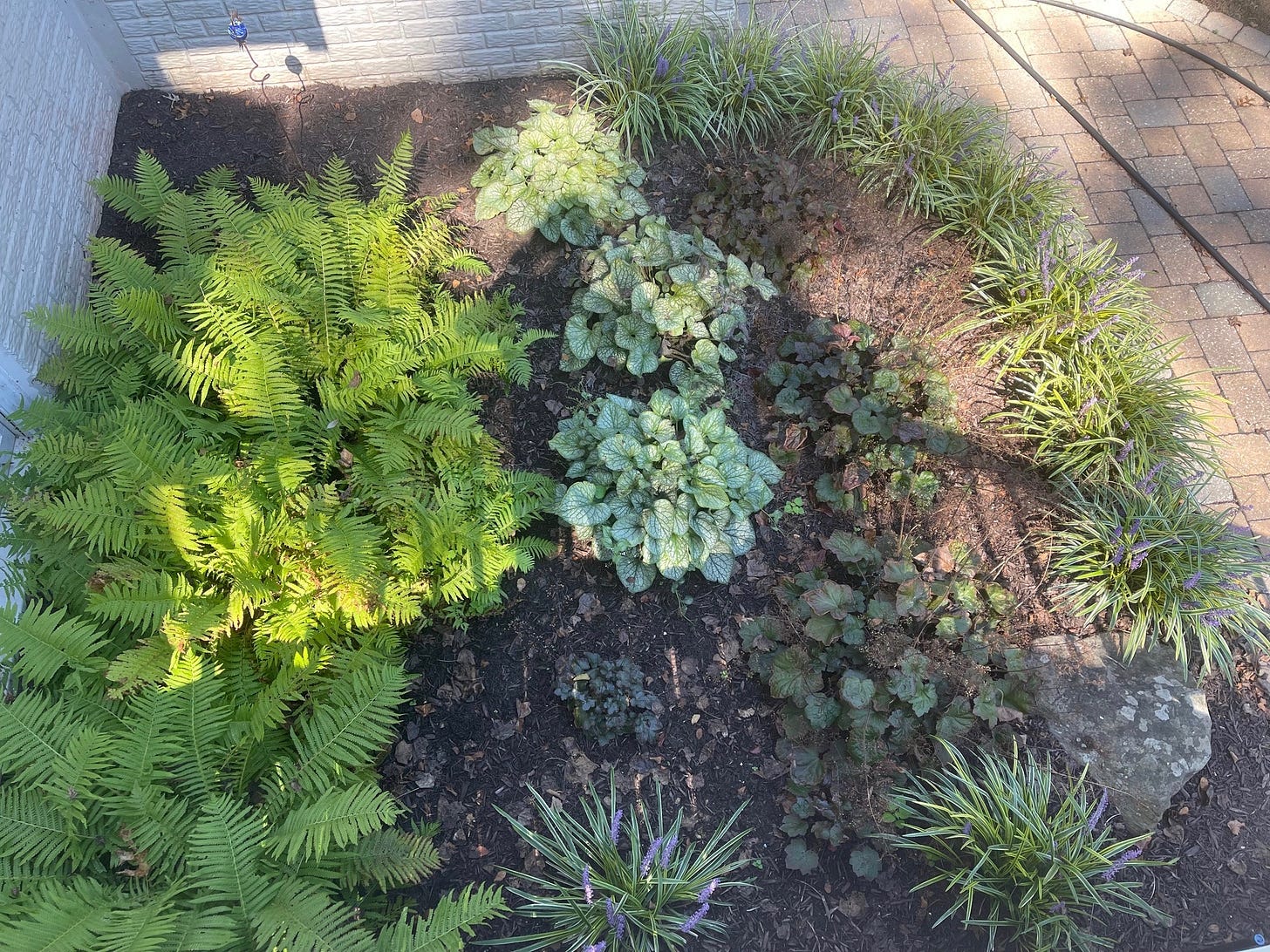
The purple coral bells (heuchera) have also been a great success in this garden. They are another group of plants from the 2022 installation that have survived and thrived. One issue I have with the coral bells is that the dark purple color is a great contrast with the bright green of the ostrich ferns, and even the pretty, broad leaves of the brunnera, but I think I want more color in the bed during the summer. I have the same gripe about the astilbe bed where I think I need brighter summer colors. I’ve imagined adding several different colored coral bells, or foamy bells, to this bed and transplanting the purple ones in this bed to other shady parts of the garden. I’m struck by the brilliant red and gold coral bells that I’ve seen at the nursery, and I can envision them in several shade beds around the house, including this one. I’ve already planted a red coral bell next to the crepe myrtle tree in the steps garden, but I think golds, yellows and whites are the color palette I’m looking for here. I suppose I’m like many shade gardeners, always seeking some bright color to add to the landscape.
Coral bells have tiny bell-shaped flowers that appear on long, wand-like stems from late spring through early summer. Apparently, some gardeners prune the dead flower stems so they don’t detract from the look of the mounded, colorful foliage. Other gardeners take the cut stems indoors and make them part of their potted flower displays. To date I’ve left them on the plant, if only to remind me that the plant is/was healthy. In September the dead flower stems were still waving high in the air above the plant, light brown and delicate.
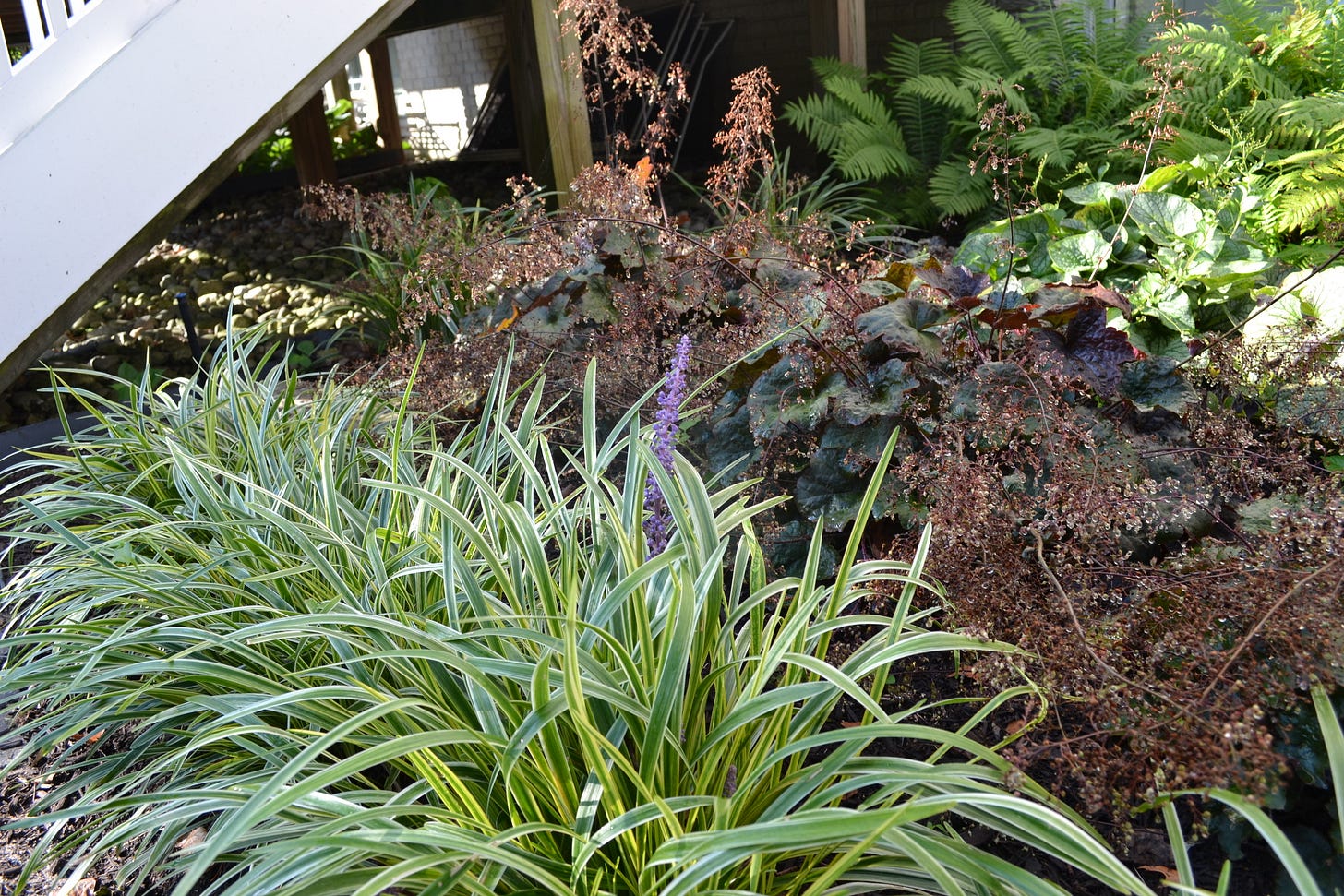
I had no idea that variegated liriope’s common name is lilyturf until a few weeks ago, when I was paging through one of my books on perennials. The liriope were part of the original 2006 garden redesign and have been moved to this bed from other parts of the garden. Most of the plants were originally around the firepit and other borders and then moved to this bed, mainly because I didn’t know what else to do with them. These plants are very robust, even though, as with other plants from the 2006 redesign, I’ve never done any of the recommended maintenance. I’m writing this in the month of September, and I’ve been reminded that variegated liriope are fall bloomers that are quite beautiful, throwing up spikes of bright purple flowers that contrast beautifully with the striped leaves of the liriope and the darker colors of the shade plants just behind them.
I think that about wraps it up for the ostrich fern bed. If you turn around, the firepit bed is right behind you. But before we take our chances waking up the bees that love the firepit, I want to share some observations about things I don’t really like about gardening. In my next post we’ll seriously discuss insects, sweat, and spiderwebs, the bane of my gardening existence. Once we’ve come to grips with that nasty subject, we’ll gladly return to morning patrol.
Author’s note: If you feel like it, and only if you feel like it, feel free to leave a comment on this post, or other posts you’ve read in Type A Gardener. Also, if you like the stories in this newsletter, why not share it with a friend? Just click on the Share button.

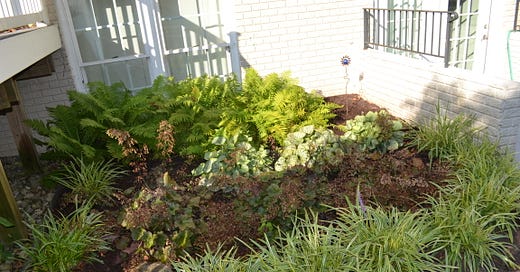



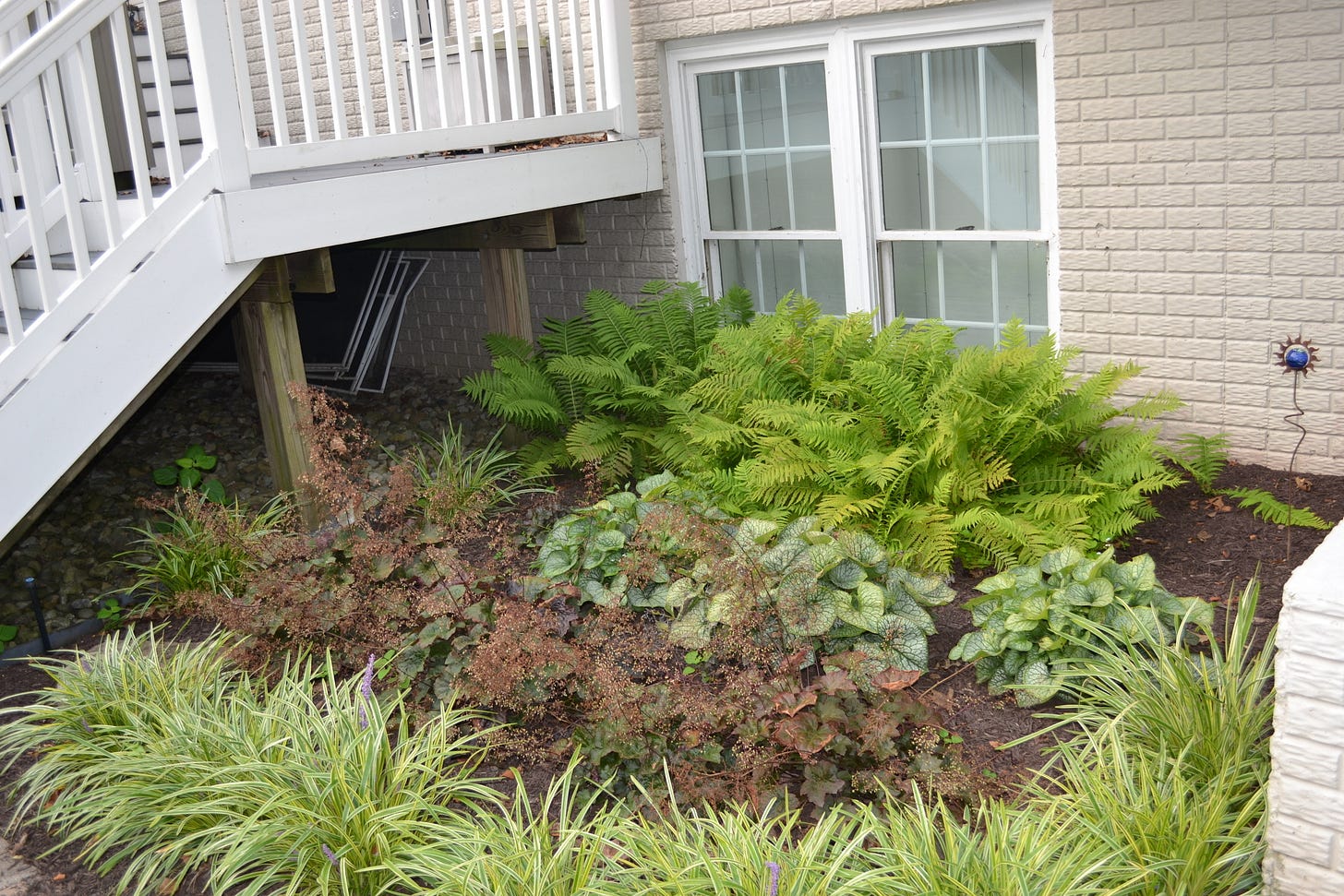

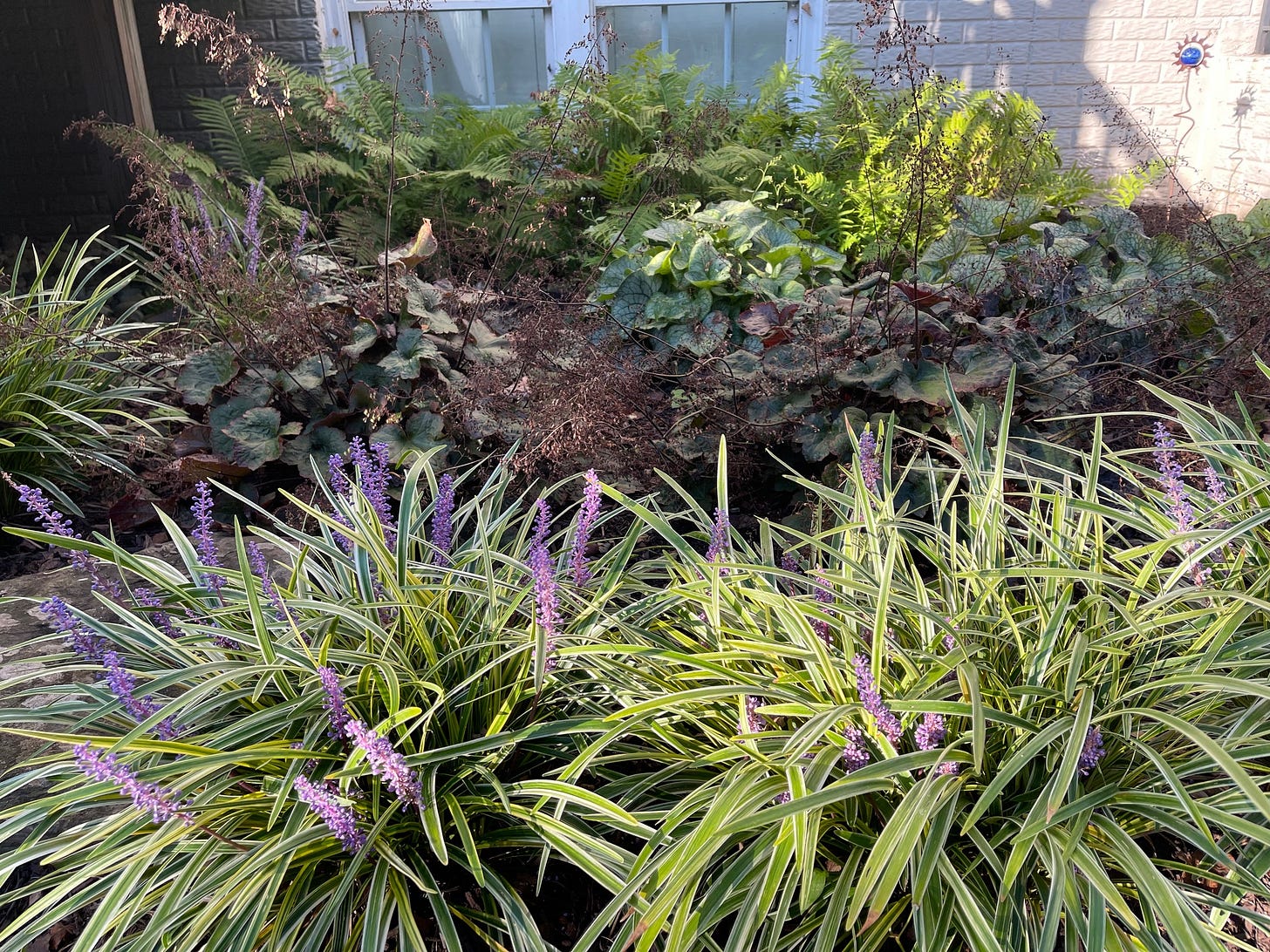
It's a different world in terms of shade versus sun plants. I write a lot about both. Stay tuned...and thanks for subscribing!
Very informative for a shade garden Ken.
I have only sun right now (working on growing some trees). My liriope do well in the sun too.